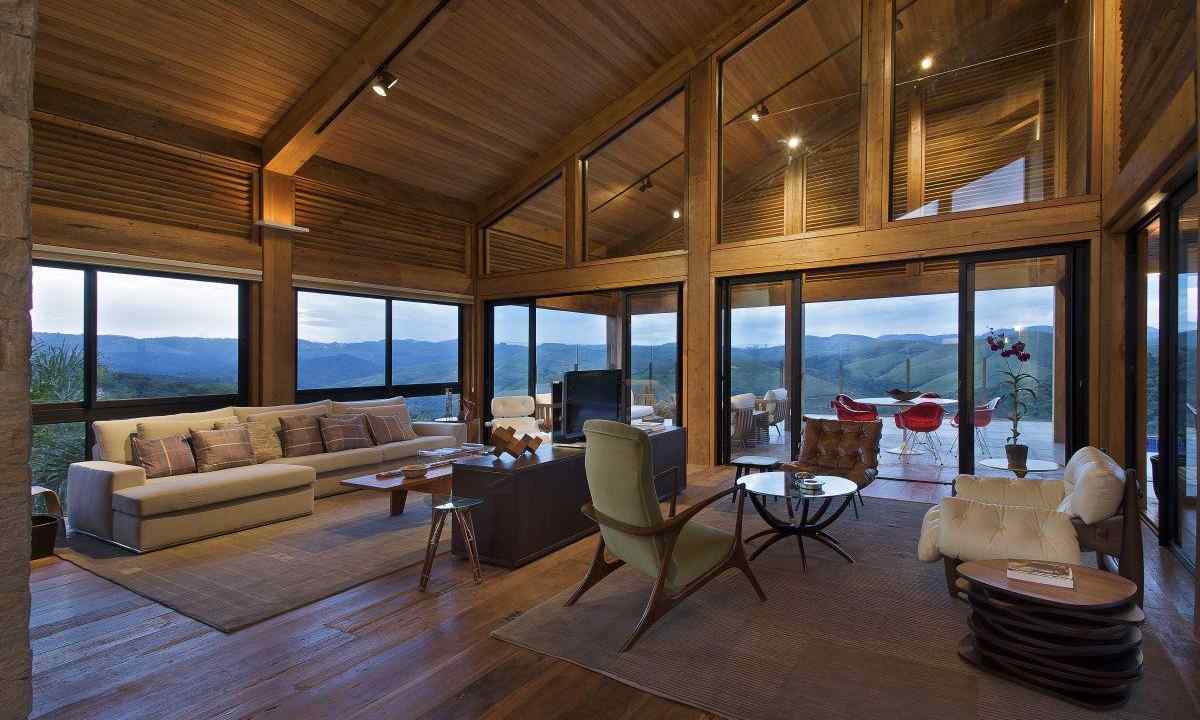In spite of the fact that wooden houses, as a rule, rather well keep heat, in the conditions of more and more rising in price electricity, at their construction apply special processes which allow to reduce heat waste and expense of the electric power to minimum. These technologies, in addition, allow to warm wooden house, having made it the most comfortable for accommodation and also to prevent premature damage of wood because of dampness and condensate.
It is required to you
- Heater;
- parotsizolyation;
- waterproofing;
- cement;
- antiseptics;
- fire-retarding agents.
Instruction
1. At wall construction take care of intra wall warming. Through walls there are greatest heatlosses (up to 50%). Arrange intra wall warming already at wall construction. Make it with the help, the so-called, mezhventsevy heater, for example, consisting of felt, linen or jute tow. For fellings thickness of heater has to be 15 mm, for houses of bar – 5-10 mm.
2. That to warm house outside, caulk up walls, and later, by means of anchors, fix on facade heater layer, for example, of polyurethane foam, expanded polystyrene, plates of mineral wool. For the best fastening of thermal insulation make special external framework. Joints of heater should not coincide with bar joints. Finish the facade device by means of brick facing, decorative or construction stone which lower number arrange on base ledge. Make gap about 6 cm between facing and heater. Near eaves and the base equip ventilating ducts.
3. At stage of finishing it is possible to warm wooden house from within, without mentioning floors and garret overlapping. It is possible to warm wooden house by means of the additional heat-insulating layer consisting, for example, of gypsum cardboard, gipsovolokn or magnesite from within. Stack this layer over vapor barrier. The plaster coat can also be additional heater. Unfortunately, at such way of warming the room space decreases a little.
4. Through roofs and windows the house leaves up to 20% of heat. If you are not going to build the mansard floor, then warm garret overlapping more thoroughly. It is necessary to begin works on warming of garret overlapping with laying of the special parobaryer consisting of roofing felt, tekton, polyethylene or steklogidroizol. Over parobaryer lay heater layer. Will be suitable for this layer panokeralit, blast furnace slag, fibrolitovy plates, haydite and other non-combustible materials. Thickness of layer of heater has to be equivalent to 250 mm of mineral wool. From above arrange to thermal insulation sand-cement screed (30 mm) and put running boards. If you plan the mansard floor, it is possible to manage qualitative sound insulation.
5. The technology of warming of the mansard floor is similar to warming of garret overlapping, but there are also differences. Under the lining ceiling consisting, at least, of two layers of 40-millimeter boards lay vapor barrier, and over it – heater layer. Surely paste over joints of paroizolyatsionny material with the special gluing tape. From above lay waterproofing, over it arrange furring, and afterwards put roofing material.
6. The floor of wooden house needs also to be warmed. If ventilation of basements is arranged correctly, it is possible to save on waterproofing. The waterproofing course is necessary if there is danger of formation of condensate in the subfield. Lay waterproofing on draft floor from board material. Later lay heat-insulation layer (from 50 mm thick for holiday apartments to 200 mm for houses of permanent residence) from mineral materials or extruded expanded polystyrene. If mineral wool is used, make additional paroizoliruyushchy layer over it. Close up joints between plates of thermal insulation material by means of foam sealants. Between thermal insulation and finished floor (for example) make gap from 1-2 cm to 10-15 cm of laminate. For protection against rodents over draft floor lay close-meshed grid from metal.

